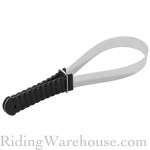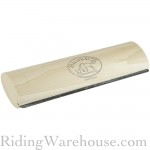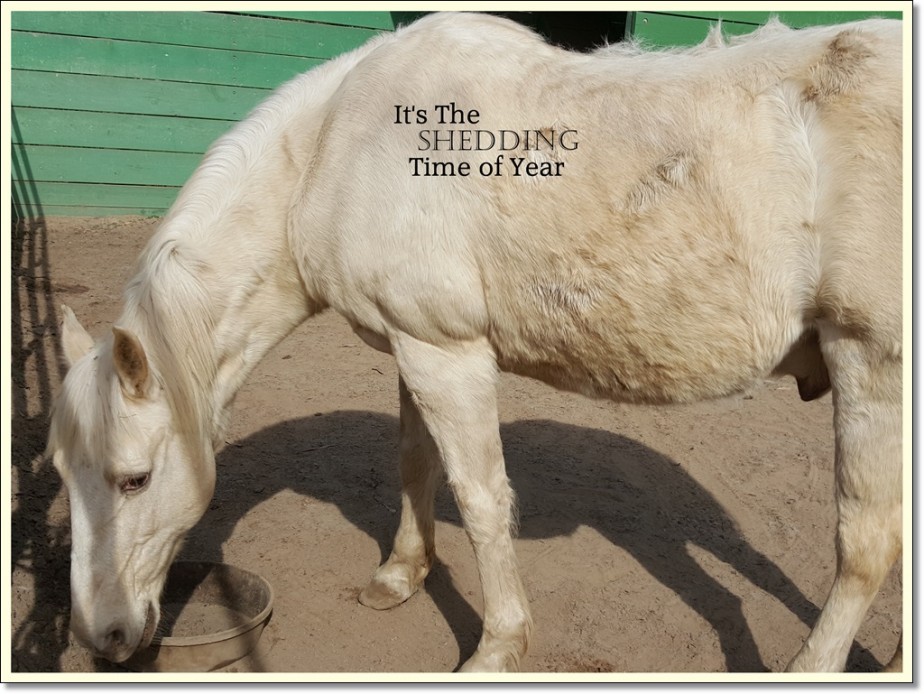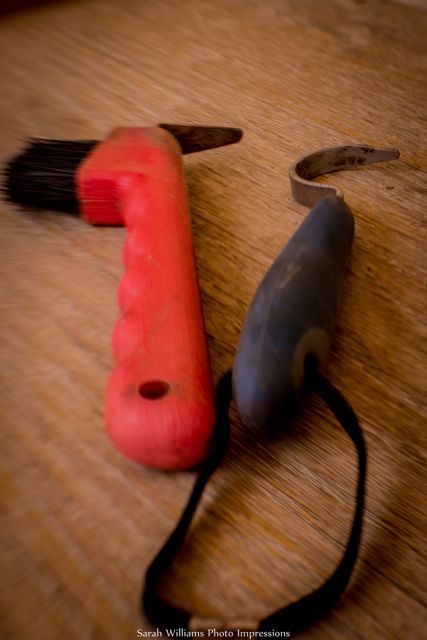As spring arrives, it brings the beauty of sun, blooming flowers, green grass, and that beautiful Central Coast warmth, but it also brings one of the greatest nightmares of equestrians…yes, I’m talking about the dreaded “shedding season”. This is nature’s way of showing us that we have to do the “dirty work” to be a good horse owner, and it’s also a good way for us to get off all that extra hair and make sure that there isn’t anything hiding underneath. Remember, spring also brings us ticks.
Yes, the ticks are out already. I witnessed one catch a ride on my dog while out on a walk the other day. Fortunately, she is a Jack Russell with lots of white hair, so I could see the little blood-sucker before he got any further.
Shedding brings us lots of hair, which gets in our eyes and mouths, and it sticks to our clothing. Grooming and tacking up your horse becomes more of a chore this time of year, yet the beautiful sleek coat that is hiding underneath all that hair is quite the reward. So, let’s get this shedding thing over with, right?
Tip #1 Shedding Out
 You have a few options for helping that thick winter coat your horse has built up to fall off. Traditionally, many horse owners use the good old “shedding blade”; you run the blade over the coat, and it drags the loose hair along with it. This tool can be flipped over and double as a sweat scraper. Still other equestrians use the good old “curry comb” method…strong circular motions, and you can get most of the loose hair to release from your horse, unfortunately, it usually ends up all over you in the process. Both of these methods seem to be as old as time, so is there a better way?
You have a few options for helping that thick winter coat your horse has built up to fall off. Traditionally, many horse owners use the good old “shedding blade”; you run the blade over the coat, and it drags the loose hair along with it. This tool can be flipped over and double as a sweat scraper. Still other equestrians use the good old “curry comb” method…strong circular motions, and you can get most of the loose hair to release from your horse, unfortunately, it usually ends up all over you in the process. Both of these methods seem to be as old as time, so is there a better way?

Brie at Riding Warehouse recommends a tool called “Sleek EZ”. “The Sleek EZ looks really simple but the exclusive tooth pattern design on the blade pulls out hair so easily!” says Brie who also tells us this is a best seller, especially this time of year. It fits comfortably in the hand, and it not only drags out the loose hair, it shines the coat that is left behind. It is also very useful for removing horse hair from things like saddle blankets, pads, and horse blankets.
One thing that seems to be impossible to get away from is all that shedding hair sticking to your clothes and skin as you work to groom your horse. If this is a problem for you, our suggestion is to get yourself a light weight, disposable lab coat – they are pretty cheap. You can also use one while body clipping and even as a show clothes cover. Best of all, when you’re finished you can just throw it away! Eye (sunglasses help) and face protection can be employed as well…or you can just deal with the hair and chalk it up to being a horse owner. We can all relate to trying to remove loose hair that has found its way into our eyes and mouth only to make things worse by adding more!
Tip #2 Check for Ticks
Helping our horses to “shed out” as soon as possible is the best way to detect ticks on the skin. Ticks are just a part of life during this season, as they live in the tall grasses and underbrush that spring up as the weather grows warmer. They especially like to hang out on the edges of blades of grass or other foliage in the early morning hours, but they can be found any time of day. It’s our job as horse owners to check for ticks and remove them promptly.
During this time of year, check your horse daily for ticks, especially after a trail ride or when you bring your horse in from a pasture setting. Ticks tend to gravitate upwards and often implant themselves at the base of the tail, or burrow into the crest of the neck where the mane grows out. They can also be found on the legs, and basically the hair will hide them unless you have a good look. Washing your horse will not get a tick to drop off. Wiping your horse’s legs down (from coronary band upwards, and especially the underside of the hind legs) with rubbing alcohol after a trail ride can be beneficial and the rag can catch any ticks that might be creeping up the legs.
Tip #3 Remove Ticks Promptly
Ticks carry Lyme Disease, which can be a serious condition if left untreated. They need to be attached for 24 to 48 hours in order to transmit the disease, and the black deer tick – which is most common in our area – happens to be one of the carriers of Lyme Disease. So, if you do find a tick on your horse, you need to remove it promptly.
Removing an embedded tick isn’t all that difficult if you know how to do it. Using splinter forceps, tweezers or fingers, firmly grasp the tick as closely to the animal’s skin as possible, gently pull the tick out with a quick twist of the wrist. Don’t worry too much if the tick’s mouth parts are left in the flesh, this should not cause any serious problems. For best results after removing the insect, apply an antiseptic to the site.
For less immediate, but equally effective results, swab the tick in both directions with a cloth soaked in baby oil or rubbing alcohol. This suffocates and kills the tick, which will eventually allow it to drop off on its own, but it may take several days.
Don’t forget to check yourself for ticks too. I can remember a time when I had been out trail riding during the day and had a date in the evening – dinner and the theater. As I sat in the theater seat watching the play, I felt something creeping up my neck and behind my ear…yep, it was a tick! There I was, all dressed up on a first date, and I had to pull a tick off of myself. Just another one of the things that us equestrian fanatics have to deal with!






